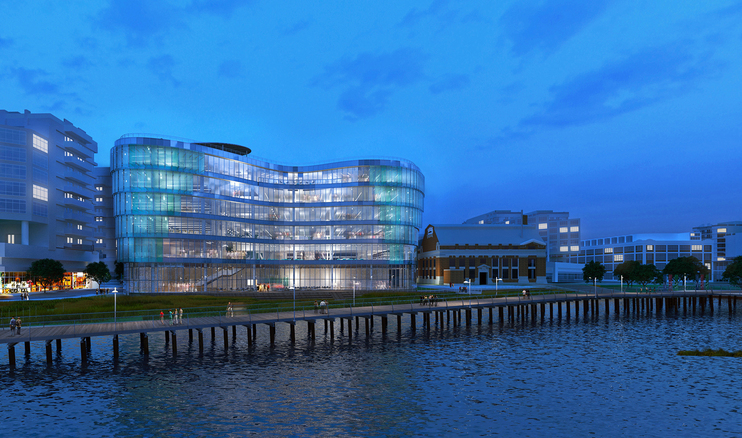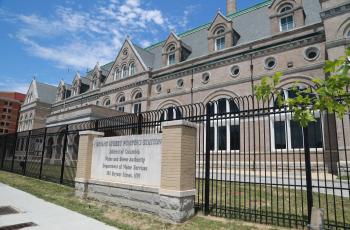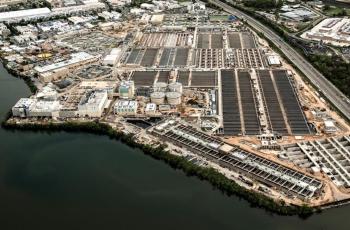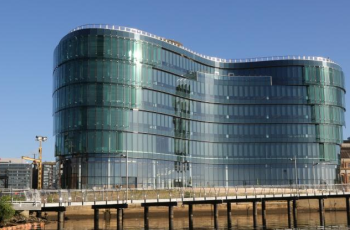HQO

Perhaps, nowhere will our past and our future intersect more closely than on the banks of the Anacostia River where construction is nearly complete on a new administrative headquarters for DC Water. The new building sits atop the existing O Street Pump Station, adjacent to the historic Main Pump Station, and above massive clay sewer lines that date back more than 100 years.
At the same time, the new headquarters embraces the future in sustainable design and construction. Heat from the pumping station’s wastewater treatment operations help condition the new building; a 30,000-gallon cistern captures rainwater for reuse onsite; and tinted glass sun shades reduce energy use while maximizing daylighting and the panoramic river views.
The new headquarters will allow us to consolidate our administrative offices in a single location, where we can more easily interact with customers and educate the public about DC Water’s mission in support of every living organism. It will also free up valuable space for future process improvements at the Blue Plains Advanced Wastewater Treatment Plant.
Overview
Previously, DC Water's administrative offices are spread across the District of Columbia in multiple facilities, including leased space. The Central Operations Facility at the Blue Plains Advanced Wastewater Treatment Plant serves as the Authority's de facto headquarters, which was not its original intended purpose. Meantime, process improvements at Blue Plains have consumed almost all 150 acres of the plant. By relocating nonessential personnel off of the Blue Plains industrial campus, DC Water will preserve what little remaining space exists - an irreplaceable commodity - for future process improvements if required by permit or desired for innovation.
The new headquarters was built over an operating pump station in the Capital Riverfront neighborhood. With 151,300 gross square feet, it will house approximately 350 employees and will allow DC Water to consolidate its administrative offices in a single location. Construction began in 2016 and is expected to be completed in late 2018.
Planning for the Future
The DC Water Board of Directors approved a Revised Facilities Master Plan in 2013 to optimize the use of existing DC Water land and facilities. That plan includes the construction of a new headquarters building, leveraging ratepayer funds that otherwise would have been spent to lease office space and to expand existing facilities.
Sustainable Excellence
The new Administrative Headquarters Building will be LEED Platinum Class A, incorporating almost every state-of-the-art environmentally sustainable feature used in modern construction. Rainfall will be captured onsite and used for irrigation and non-potable water needs inside the building. Alternative energy will be supplied by an innovative sewer heat recovery system.
In addition, the location will expand the commuting options for DC Water staff, leveraging existing public transit services including Metrorail, Metrobus, DC Circulator and Capital Bikeshare. That will reduce the demand for parking, since fewer employees will be driving to work.
The Value of Water
Centrally located, the new headquarters will make it easier for DC Water to interact with customers and educate the public about DC Water's mission in support of every living organism. The Authority distributes safe and clean drinking water. It also treats and recovers valuable resources through wastewater collection and treatment, and leverages anaerobic digestion to create clean energy.
Educational programming will take place inside and outside the new building. The building itself will be a testament to the benefits of green building technologies, emphasizing those that reuse and conserve water. The public areas will include interpretive and interactive exhibition spaces to tell the story of DC Water's past and present efforts to protect public health and act as a vital steward of the environment, from the Potomac and Anacostia Rivers to the Chesapeake Bay.






